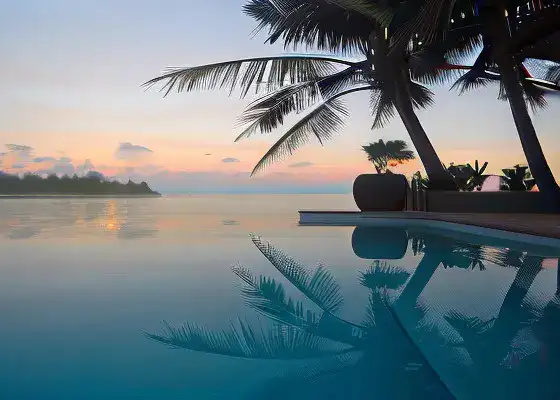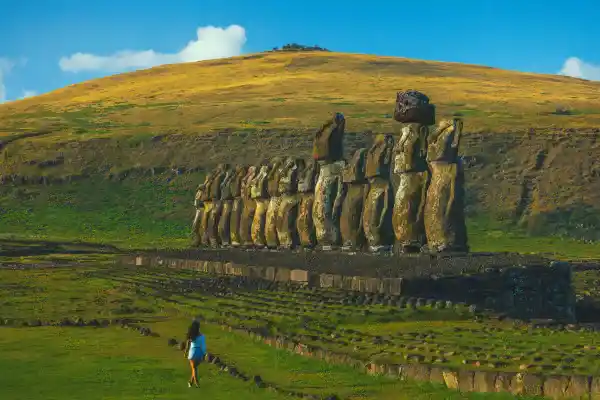Rarotonga Guide for Dance Enthusiasts
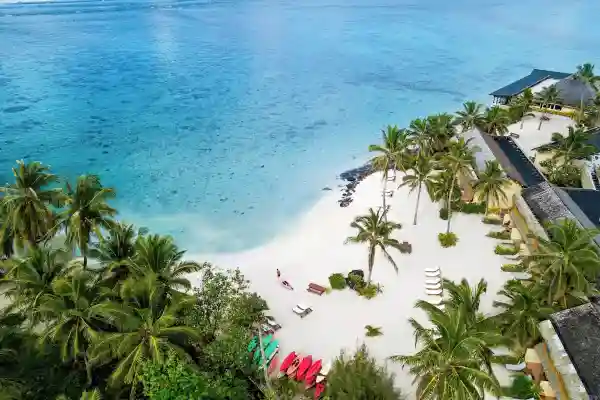
Travel Guide to Rarotonga
Rarotonga, the largest and most vibrant of the Cook Islands, is a tropical paradise known for its stunning beaches, lush greenery, and rich Polynesian culture. This guide will help you plan your visit to make the most of this idyllic destination.
When to Go
Rarotonga enjoys a warm, tropical climate year-round, but there are slight variations to consider:
-
Dry Season (May to October):
-
The best time to visit, with cooler temperatures (around 24-27°C or 75-81°F) and lower humidity.
-
Ideal for outdoor activities like hiking, snorkeling, and cultural events.
-
Fewer rain showers, making it perfect for beach days.
-
-
Wet Season (November to April):
-
Warmer temperatures (around 26-30°C or 79-86°F) with higher humidity.
-
Expect tropical downpours, but they are often brief.
-
A quieter, less crowded experience with lush landscapes.
-
What to Do
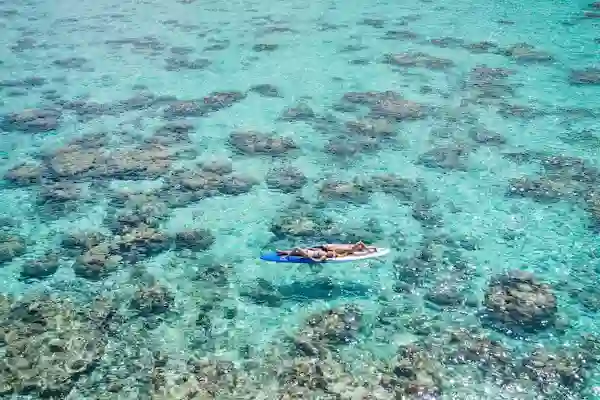
1. Explore Pristine Beaches
-
Muri Beach: A favorite for its clear lagoon, perfect for swimming and paddleboarding.
-
Black Rock Beach: A serene spot with excellent snorkeling opportunities.
2. Lagoon and Water Adventures
-
Snorkeling and diving at coral reefs teeming with marine life.
-
Lagoon cruises, such as the glass-bottom boat tours, offer a unique perspective of the underwater world.
3. Trekking and Nature
-
Cross-Island Trek: Hike through lush jungle to Te Rua Manga (The Needle) for breathtaking views.
-
Visit the Maungaroa Mountain Reserve to experience Rarotonga’s native flora and fauna.
4. Cultural Experiences
-
Attend a traditional Island Night event, featuring Polynesian feasts and dance performances.
-
Explore the Cook Islands Cultural Village to learn about local traditions and crafts.
5. Markets and Shopping
-
Punanga Nui Market (Saturdays): A bustling market offering handmade crafts, fresh produce, and local delicacies.
Dance Festivals
Dance is central to Rarotonga’s vibrant cultural life, and attending a dance festival is a must:
Te Maeva Nui Festival (July-August):
-
Celebrated during the Cook Islands’ independence week.
-
Features mesmerizing dance performances, traditional drumming, and cultural showcases.
-
A perfect time to experience the island’s pride and heritage.
Tiare Festival (November):
-
A celebration of the Cook Islands’ national flower, the tiare (gardenia).
-
Includes dance competitions, flower parades, and community events.
Weekly Island Nights:
-
Held at resorts and cultural centers, showcasing traditional Cook Islands dances like the ura pa’u (drum dance).
Travel Tips
-
Currency: New Zealand Dollar (NZD), but local shops may also accept Cook Islands currency.
-
Transport: Rent a scooter or bicycle for easy island exploration.
-
Local Etiquette: Dress modestly when not on the beach, and always ask before taking photos of locals or sacred sites.
-
Accommodation: Options range from luxury beachfront resorts to family-owned guesthouses.
Rarotonga offers a blend of natural beauty, adventure, and cultural richness. Whether you’re a sun-seeker, a history buff, or an adventurer, this island will capture your heart and leave you longing to return.
Natural Attractions in Rarotonga
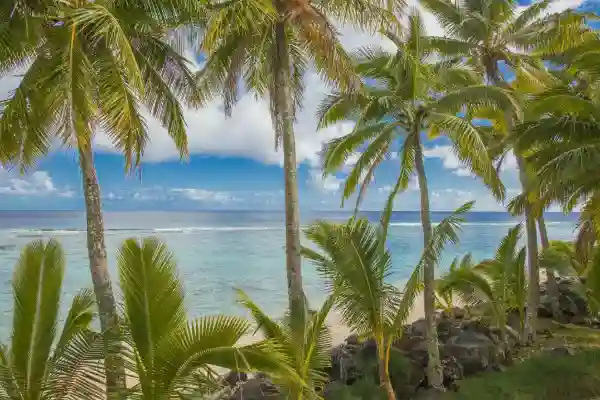
Rarotonga’s natural beauty is one of its greatest treasures. From lush rainforests to crystal-clear lagoons, here are the must-see natural attractions:
1. Muri Lagoon
-
A stunning turquoise lagoon with four small islets (motus) perfect for kayaking or paddleboarding.
-
Known for calm waters, it’s ideal for swimming, snorkeling, and spotting marine life like colorful fish and rays.
2. Te Rua Manga (The Needle)
-
A striking rock formation in the heart of the island, accessible via the Cross-Island Trek.
-
The trek winds through dense jungle, waterfalls, and offers panoramic views from the summit.
3. Wigmore’s Waterfall
-
Nestled in a lush valley, this waterfall is a refreshing stop after exploring Rarotonga’s interior.
-
Best visited after rainfall when water flow is strongest.
4. Takitumu Conservation Area
-
A protected rainforest area dedicated to preserving native flora and fauna, including the endangered Kakerori (Rarotonga flycatcher).
-
Guided eco-tours available to learn about local conservation efforts.
5. Avana Harbour
-
A historic spot tied to the Polynesian migration.
-
Scenic views and great for kayaking or learning about Rarotonga’s connection to Pacific exploration.
6. Black Rock (Tuoro)
-
A dramatic volcanic rock formation on the western coast.
-
Offers excellent snorkeling and is a fantastic spot to watch the sunset.
Local Tips for Visiting Rarotonga
1. Transportation
-
Scooters: Renting a scooter is a popular and economical way to explore the island’s 32 km circumference.
-
Island Buses: Two bus routes (Clockwise and Anti-Clockwise) make getting around easy and fun.
2. Shopping and Dining
-
Shop at the Punanga Nui Market for fresh tropical fruits, island-style street food, and locally crafted souvenirs.
-
Try local delicacies like ika mata (raw fish marinated in lime and coconut cream) and rukau (cooked taro leaves).
3. Respect the Environment
-
Rarotonga takes sustainability seriously—avoid single-use plastics and dispose of waste responsibly.
-
When snorkeling, never touch coral reefs to preserve marine ecosystems.
4. Learn Local Phrases
-
Greeting locals in Cook Islands Māori can enhance your experience:
-
Kia Orana (Hello/May you live a long life)
-
Meitaki (Thank you)
-
5. Sunday Quiet Time
-
Sundays are a day of rest and worship. Many businesses are closed, but you can attend a local church service to experience uplifting Polynesian hymns.
Cool Facts About Rarotonga
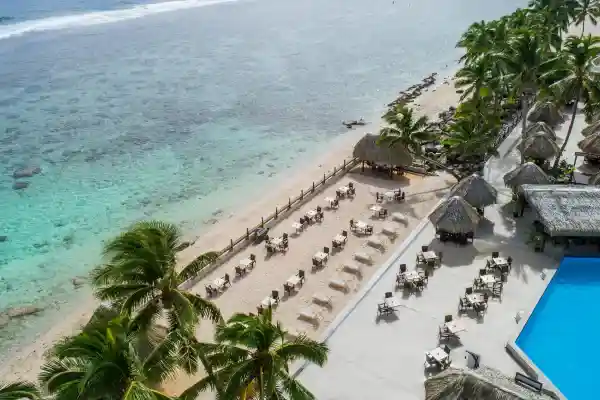
-
Polynesian Wayfinders:
Rarotonga is believed to have been a key departure point for Polynesians who voyaged thousands of miles across the Pacific, eventually settling in New Zealand. -
Time Traveler’s Paradise:
Rarotonga is located just west of the International Date Line, making it one of the last places to see the sunset each day. -
No Building Taller Than a Coconut Tree:
To preserve the island’s natural beauty, buildings cannot exceed the height of a coconut tree. -
Home of the Kura (Rarotongan Parrot):
While it’s now extinct, the vibrant red parrot once thrived on the island and was highly valued in Polynesian culture. -
Traditional Drumming:
Cook Islands drumming is world-famous for its rapid, rhythmic beats. It’s central to dance performances and a cultural highlight. -
Circular Island Road:
The Ara Tapu road circles the entire island, making it impossible to get lost and perfect for a leisurely drive or cycle. -
Unique Currency:
The Cook Islands has its own distinctive coins, such as the triangular $2 coin, which are collectors’ items worldwide.
Rarotonga is more than a tropical paradise; it’s a destination steeped in culture, history, and natural wonders waiting to be explored.
Dancing in Rarotonga
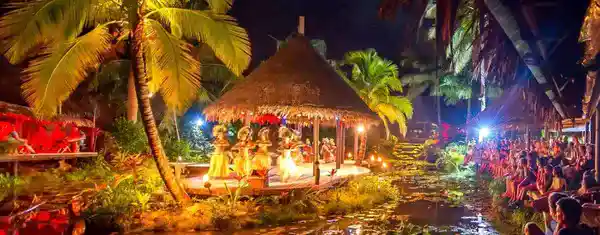
Dancing is a vibrant part of Rarotonga’s culture, and there are plenty of places where you can experience or participate in this joyous art form. Here’s a guide to the best spots for dancing in Rarotonga:
1. Island Nights
Island Nights are traditional cultural evenings held at resorts and local venues. These events include feasts, music, and spectacular dance performances.
Where to Go:
-
Te Vara Nui Village:
-
Offers an authentic over-water show featuring traditional Cook Islands dancing and drumming.
-
Includes a buffet dinner with local delicacies.
-
-
Highland Paradise Cultural Centre:
-
Hosts a cultural night with stunning performances, storytelling, and a breathtaking hilltop setting.
-
-
Edgewater Resort and Spa:
-
A popular choice for a family-friendly Island Night with a lively atmosphere.
-
2. Local Nightclubs and Bars
For a more modern twist on dancing, visit the local nightspots where residents and tourists mingle:
Popular Spots:
-
Rehab Nightclub:
-
The island’s top nightclub, playing a mix of local beats, reggae, and popular hits.
-
Great for dancing late into the night.
-
-
Trader Jacks:
-
Known for its lively vibe and scenic waterfront location.
-
Often features live bands, and the dance floor gets busy on weekends.
-
3. Community Events and Festivals
Attending a dance festival or community event is one of the best ways to experience traditional Cook Islands dance.
Te Maeva Nui Festival (July-August):
-
Features competitive dance performances where groups showcase their skills in traditional costumes.
Tiare Festival (November):
-
Includes dance competitions and floral-themed parades with vibrant performances.
4. Dance Lessons and Workshops
If you want to try traditional Cook Islands dancing yourself, consider taking a class.
-
Te Vara Nui Village:
-
Offers dance workshops where you can learn basic steps and movements.
-
-
Local Community Groups:
-
Some local cultural centers and schools offer drop-in classes for visitors.
-
5. Beach and Open-Air Dancing
During beach parties or informal gatherings, it’s common for locals to break out into dance. Join in or enjoy the spontaneous performances under the stars.
Tips for Dancing in Rarotonga:
-
Clothing: Wear lightweight and comfortable clothing, especially for energetic traditional dances.
-
Respect: If you’re joining traditional dance, follow the instructor’s guidance and respect the cultural significance of the movements.
-
Fun Spirit: Dancing in Rarotonga is about joy and connection—don’t worry about being perfect!
From traditional performances to lively nightlife, Rarotonga offers unforgettable opportunities to dance or watch mesmerizing Polynesian rhythms.
